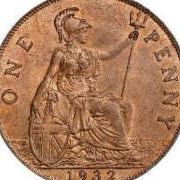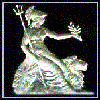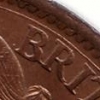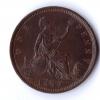|
|
The current range of books. Click the image above to see them on Amazon (printed and Kindle format). More info on coinpublications.com |
|
|
-
Content Count
773 -
Joined
-
Last visited
-
Days Won
78
alfnail last won the day on April 3
alfnail had the most liked content!
Community Reputation
876 ExcellentAbout alfnail
-
Rank
---

Recent Profile Visitors
-
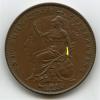
Stuff to Make Us Laugh
alfnail replied to Madness's topic in Nothing whatsoever to do with coins area!
-

Stuff to Make Us Laugh
alfnail replied to Madness's topic in Nothing whatsoever to do with coins area!
-

Stuff to Make Us Laugh
alfnail replied to Madness's topic in Nothing whatsoever to do with coins area!
-
Many thanks Richard, thought you would have one!! I have taken your picture, rotated it, and positioned same as my top 1844 DFF above. These two coins are now shown below. It is difficult to compare those border gap features with the pixels available on the 1843. It does seem to me, however, that the die flaw can just about be seen on your coin in the same position......... also the small protrusion above the F. First impressions, therefore, are that this points to a single reverse DFF die used on both the 1843's and the 1844's. If you reduced the size of your picture to get it within the forum 500Kb limit then please could you email me the original thanks? If you can get same picture with more pixels so that border teeth can be seen more clearly that would also be great.
-
It would have been good to also have a detailed picture of FID on the 1843 DFF, to compare against the 1844 pictures above. Unfortunately I sold my example to Mike Hopkins several years ago, so the picture below is the best I have got from that piece. Can't really examine the teeth, but it looks like the I of FID is in line with F and D, and that it has not been repaired. Also, possibly, the start of a flaw exiting top right hand side of the F. Does anyone else have a high grade 1843 DFF example they could picture.......maybe Richard has one?
-
Agree with that Jerry, so I guess I’m trying to find a way to explain the die flaws looking very similar on both coins (but not exact same locations), also the REG colons in different locations (the other ones may be the same). Looking again at the FID pictures there are so many things that look the same, making it difficult to believe that they are struck from different dies, particularly bearing in mind the blocked E in DEF. Zooming in at the borders of these two coins I now find that the teeth, and the gaps between them, seem to be identical in their shape and size. If, for example, you examine the gaps highlighted in red in the attached pictures then the one highlighted on the left does NOT have a completely curved top to it (unlike the others), and the one highlighted towards the right has a line running through the top of the gaps. This is the only gap (out of 12) where that line is obvious…..and it is on both coins! Surely that is too much of a coincidence to be on 2 different dies. Perhaps, as you indicated, the events were that:- a) the obvious flaw, seen on the top coin, was removed from the die. b) this would have led to the I of FID needing to be repaired, but they entered it too high (as shown in the bottom coin). c) the flaw later returned, as it is an inherent weakness in the die, but it returned in a slightly different location e.g. where it exits top right of F of FID. Am I again missing something? I missed the bulge on the left of the I of FID because I was looking so closely at the protrusion at the bottom…..but Chris thankfully pointed that out.
-
Thanks for this Jerry. I was thinking along the same lines, but didn't think that the Royal Mint would have allowed a Master die with the obvious DFF defect to then be used to produce several working dies. Shouldn't a Master die have been pretty perfect? I have no idea how stringent they would have been about this sort of thing. I have just closely examined the REG colon position on the two 1844's, and the 1843 (all DFF's) and I'm sure they are all in slightly different locations.......the two 1844's definitely are!
-
Thanks for your reply Chris, appreciated. The top coin does not have the I of FID repaired so that must mean that, if both coins were struck from the same reverse die, the repaired bottom coin must have been struck at a later date. However, the top coin has a much more developed die flaw than the bottom coin so that must mean that, if both coins were struck from the same reverse die, the top coin must have been struck at a later date. The conclusion must surely be that the two coins were struck from different reverse dies. Do you agree please? If so, then I am still wondering how the DFF for DEF ‘blocked’ die defect could appear to be exactly the same on multiple 1844 reverse dies…….and the 1843 too. Here are close up F’s of these two 1844’s.
-
When I first started to collect Victorian Copper pennies, I thought that Bramah’s 1843 and 1844 DFF (varieties 3b and 4b) must only occur on a single reverse die. Several years ago, however, I managed to obtain a decent example of an 1843 DFF; this allowed me to see that the colon positions on this 1843 DFF were surprisingly in slightly different positions to the 1844 DFF which I already owned. Since then, I have been left wondering how the minting process has repeated such an exact defect in 1844 as had occurred on the 1843 issue…..but on two different reverse dies. On closer examination of my own collection, I now find that I seem to have two different 1844 DFF reverse dies. These two 1844 DFF’s have die flaws running through FID which appear to be slightly different. I attach pictures of these flaws, note in particular the point at which the flaw exits the right hand side of the I of FID. The flaws are very similar, but not exactly the same, and I think must prove they are struck from different reverse dies. Again, there are some slight differences in colon positions, which further confirms they are two different 1844 reverses. I would be grateful if any member can shed some light on how this particular ‘blocked die’ defect could appear on at least 3 different reverses, and look exactly the same on all of them? Is it possible perhaps that a Master die had this defect and that it was transferred to working dies? I am not an expert in that area, so would appreciate thoughts please.
-

Let's See Your Copper Coins, Tokens, Or Medals!
alfnail replied to brg5658's topic in British Coin Related Discussions & Enquiries
Thanks Will, that has worked fine, although I had to sign up to Scribd at £10 a month after a free 30 day trial. Hoping easy to cancel before then! 🤔 -

Let's See Your Copper Coins, Tokens, Or Medals!
alfnail replied to brg5658's topic in British Coin Related Discussions & Enquiries
Thanks, I tried that, but still couldn't seem to find anything to download -

Let's See Your Copper Coins, Tokens, Or Medals!
alfnail replied to brg5658's topic in British Coin Related Discussions & Enquiries
Does anyone know how I can get a free download of Dalton and Hamer please, maybe a link that works? -

Penny Acquisition of the week
alfnail replied to Paulus's topic in British Coin Related Discussions & Enquiries
Yes, it is F24 with top leaf present, as per pictures below. Interesting that in MG's book he says '2 Known' with top leaf, and '7 Known' without top leaf, whereas Richard's website shows more examples of type with top leaf. I will be selling this F24 as I have a high grade F32 which will do me for my collection. If anyone is interested in having the F24 please feel free to message me. For reference (£), I think it is similar grade to the one sold at London Coins in June 2017. -

Penny Acquisition of the week
alfnail replied to Paulus's topic in British Coin Related Discussions & Enquiries
-

Stuff to Make Us Laugh
alfnail replied to Madness's topic in Nothing whatsoever to do with coins area!
 Coinpublications.com
Coinpublications.com


